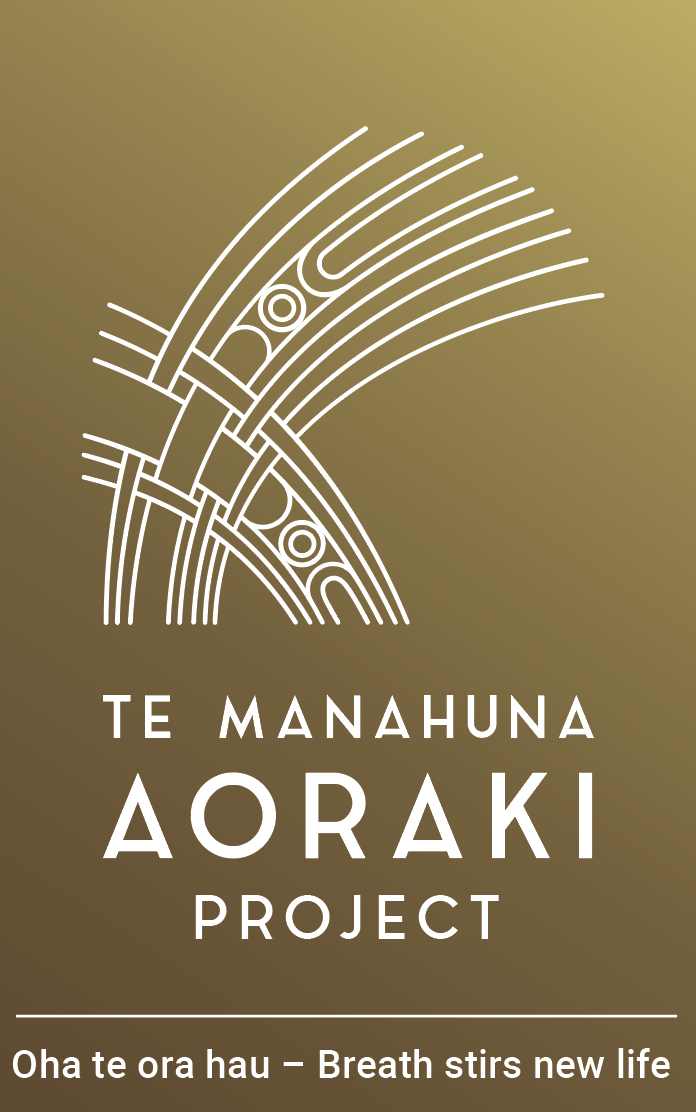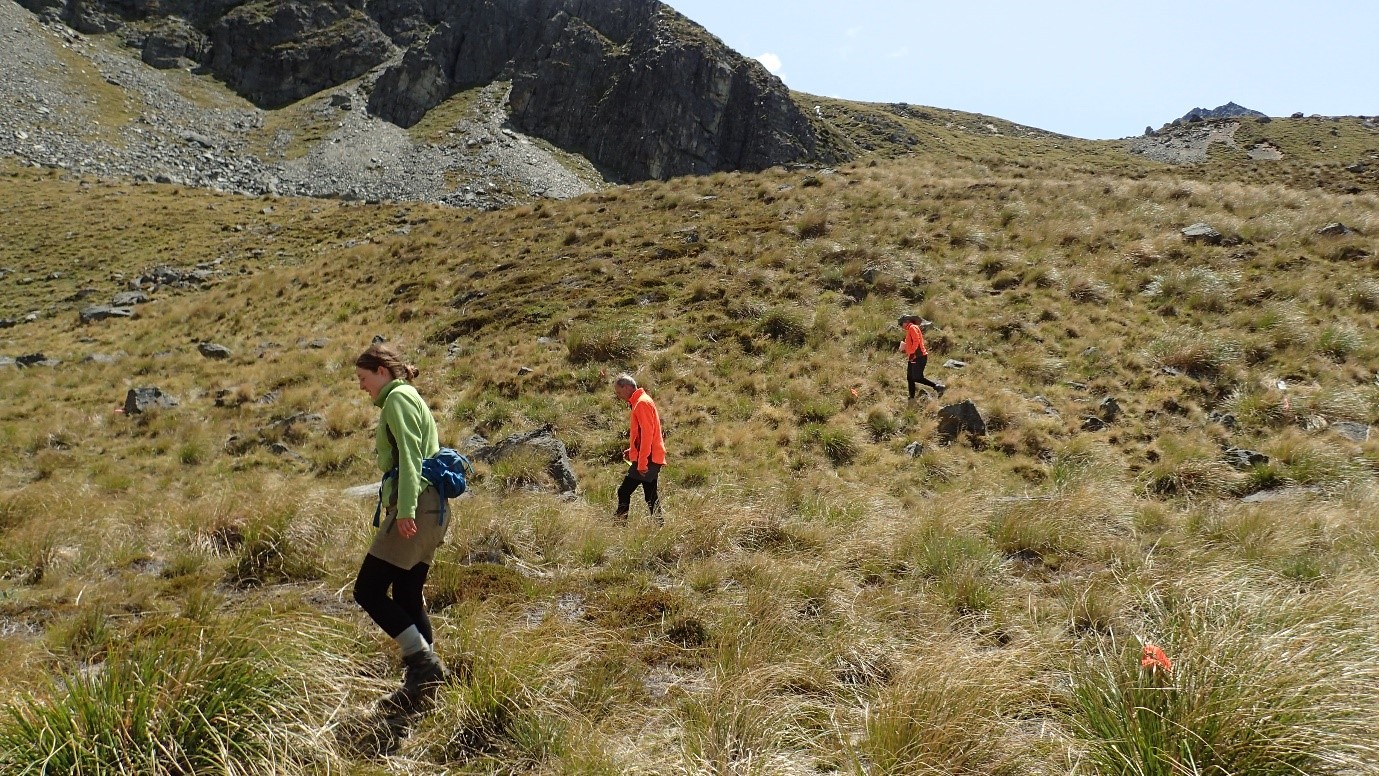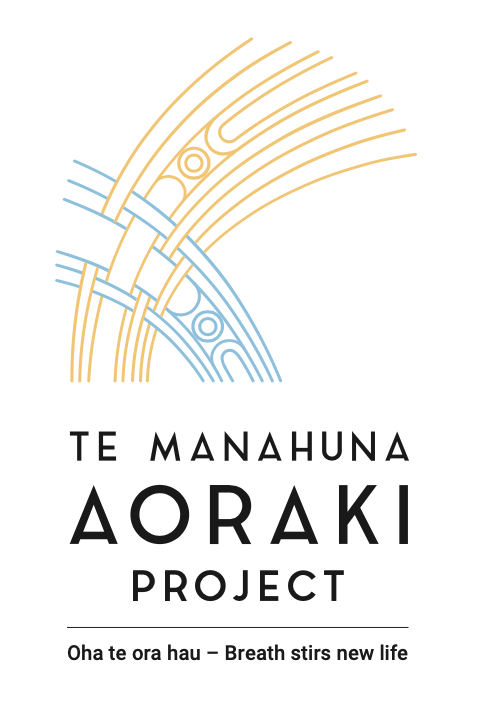What is macro-invertebrate monitoring?
Literally it means the study of large animals without a backbone/bony skeleton.
What species are you monitoring?
The bigger bugs like wētā, grasshoppers and some spiders. In particular the alpine scree wētā (Deinacrida connectens), mountain stone wētā (Hemideina maori) and grasshoppers (Sigaus australis and Brachaspis nivalis). We are also taking advantage and studying everything that the pitfall traps capture (which is where spiders come in).
How do you get to be a macro-invertebrate monitorer?
Personally, I’ve sort of fallen into it as part of my role monitoring other species.
Do you like bugs?
The wētā and the hoppers are fine, but I definitely prefer to keep my distance from the spiders!

Do you have a favourite?
The hoppers have a fantastic variety of colour and are pretty cool but I do like how chunky the wētā females can be.
What’s a typical day when you are out in the field?
We monitor three sites at different altitudes and are on site for four days.
Day 1 sees us set up (digging in pitfall traps, putting out tracking tunnels and setting up a grid for the grasshopper monitoring) and the first round of night monitoring for both species of wētā. Days 2 and 3 follow the same pattern: close the pitfalls first thing in the morning, and the person at the top campsite walks down to join the other for the grasshopper monitoring.
Grasshopper monitoring commences once it’s over 15 degrees and preferably when there is a bit of sun about! Grasshopper monitoring consists of walking up and down 100m transect lines in pairs, spaced 5m apart, across the 50m grid. All adult grasshoppers are counted (in particularly popular spots this looks like a crazy party with hoppers flying everywhere). This is then repeated 5 times. Weather and temperature are recorded throughout all the monitoring as it can have a huge impact on the activity levels and therefore on how many grasshoppers or wētā are seen. The second person then returns to their campsite higher up.
 Once the sun sets the pitfall traps are re-opened and both people will head to their respective sites to wait for complete darkness to begin wētā monitoring. The monitoring for mountain stone wētā follows the same transect lines as the grasshopper grid while the alpine scree wētā monitoring is a thorough search of the best habitat within a similar sized area. Both people search for 2 hours and mark each wētā they find with unique “numbers” made up of a sequence of dots with a paint marker.
Once the sun sets the pitfall traps are re-opened and both people will head to their respective sites to wait for complete darkness to begin wētā monitoring. The monitoring for mountain stone wētā follows the same transect lines as the grasshopper grid while the alpine scree wētā monitoring is a thorough search of the best habitat within a similar sized area. Both people search for 2 hours and mark each wētā they find with unique “numbers” made up of a sequence of dots with a paint marker.
Day four consists of taking in all the pitfall traps (40 total) and tracking tunnels (92 total) and running the grasshopper grid again before pulling in all the markers and waiting for pick up.
How hard is it to catch these bugs?
Once it warms up you’d have to be pretty quick with the grasshoppers. The wētā aren’t difficult to catch once you’ve found them, but can quickly duck into crevices which makes it a bit trickier. Mostly we try to disturb them as little as possible so if they’re staying still we will carefully mark them without actually handling them.
How do you tell the difference between male and female wētā?
Females have an ovipositor which is longer and curves upwards where males have cerci which are short and curve inwards.


What’s with the blue dots?
The blue dots correspond to numbers so that each wētā we find can be uniquely identified if found again the next night. This spreadsheet has examples
Do you work alone?
The night work is carried out alone but an important part of that is good radio communication. We have regular scheduled check-ins and nobody goes to sleep until the other person is also safely back at their tent!
Where do you stay?
Tents, with some epic views! All the sites have been stunning but staying in the Beetham and being able to see the glacier and hear the ice cracking was pretty amazing.
Now you have done the monitoring, what next?
Next is processing the data we have gathered. Things like identifying which wētā made prints in the tracking tunnels and seeing what this tells us about the populations.
How will the information be used?
The aim is to establish an understanding of what the macro-invertebrate populations look like across the Te Manahuna Aoraki project area so we have a baseline. If we don’t know what we are starting with then we won’t be able to judge how these species have been impacted by predator control.
Photos : Richard Maloney and Julia Gibson


